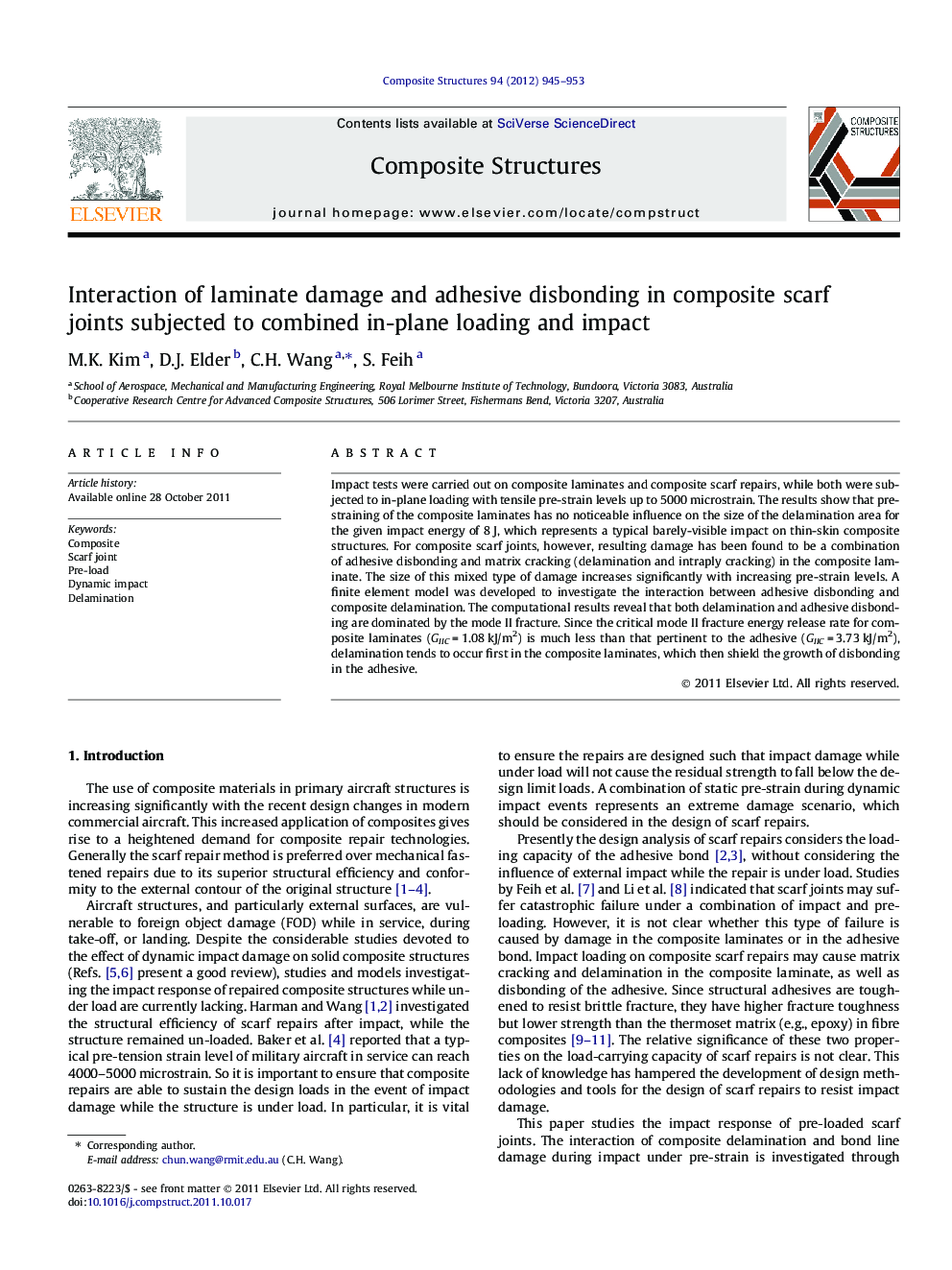| Article ID | Journal | Published Year | Pages | File Type |
|---|---|---|---|---|
| 252322 | Composite Structures | 2012 | 9 Pages |
Impact tests were carried out on composite laminates and composite scarf repairs, while both were subjected to in-plane loading with tensile pre-strain levels up to 5000 microstrain. The results show that pre-straining of the composite laminates has no noticeable influence on the size of the delamination area for the given impact energy of 8 J, which represents a typical barely-visible impact on thin-skin composite structures. For composite scarf joints, however, resulting damage has been found to be a combination of adhesive disbonding and matrix cracking (delamination and intraply cracking) in the composite laminate. The size of this mixed type of damage increases significantly with increasing pre-strain levels. A finite element model was developed to investigate the interaction between adhesive disbonding and composite delamination. The computational results reveal that both delamination and adhesive disbonding are dominated by the mode II fracture. Since the critical mode II fracture energy release rate for composite laminates (GIIC = 1.08 kJ/m2) is much less than that pertinent to the adhesive (GIIC = 3.73 kJ/m2), delamination tends to occur first in the composite laminates, which then shield the growth of disbonding in the adhesive.
